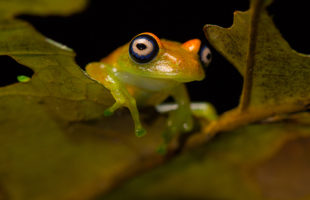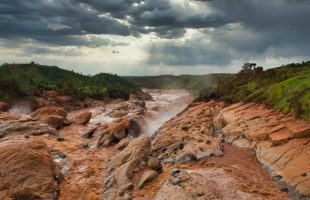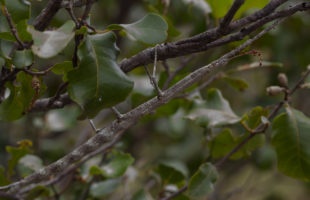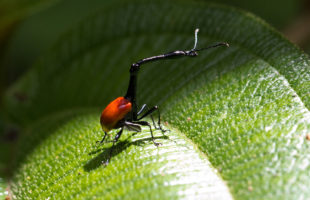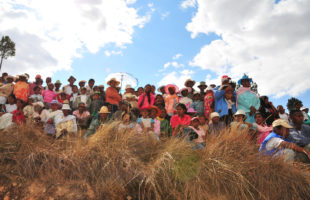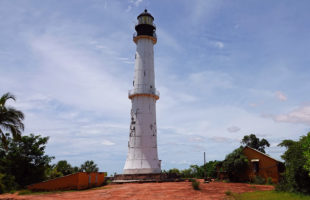Why it is called “great” is not known exactly. In fact, it is only slightly taller than his closest relative, the smaller hedgehog tenrec. Perhaps the term derives from its area of distribution: it covers almost all of Madagascar. Only in mangroves and marshes, the greater hedgehog tenrec does not occur. You can meet the greater hedgehog tenrec regularly in …
LesenMasika sipa
The Green Bright-Eyed Frog
Anyone who has ever been on the road in Andasibe-Mantadia will surely have discovered it at night: Boophis viridis, the Green Bright-Eyed Frog. Most specimens have a lot of red dots on their body, which is especially noticeable at night. They only grow to 29 to 35 mm, with the females occupying the upper size places. You can easily distinguish …
LesenThe red river Betsiboka
The Betsiboka River is one of the longest rivers in Madagascar with 525 kilometers. It has its source at around 1600 meters above sea level in the central highlands. From there it flows in a north-western direction, passes the capital Antananarivo and continues in a meandering course. The Betsiboka has a water catchment area of around 11,800 km². Some areas …
LesenThe Baobab Forest of Andavadoaka
The fishing village of Andavadoaka in the region of Atsimo-Andrefana is situated on a picturesque beach on the southwest coast of Madagascar. It is located about 170 km north of the city of Toliara (French: Tuléar). A large coral reef protects the bay of the same name. Not only divers find a true paradise here. White sand and turquoise blue …
LesenThe Walking Stick, Achrioptera impennis
You have to look very closely to discover this Malagasy camouflage artist. Achrioptera impennis, that’s the scientific name, looks like a dry branch. But in fact, it is a living animal. Achrioptera impennis belongs to the stick insects (Phasmatodea). These are herbivorous, harmless insects that camouflage themselves perfectly in the middle of their own food by their extremely deceptive appearance. …
LesenThe Madagascar Diadem
Madagascar is a paradise for butterflies. The island is home to over 3000 species, from the tiny moth to the Rainbow Butterfly (Chrysiridia rhipheus), which shimmers in all the colors mentioned in its name. One of these Malagasy butterflies is the Gladiator Butterfly or Madagascar Diadem (Hypolimnas dexithea). It is especially popular among collectors, as it is particularly large with …
LesenThe giraffe necked weevil
One of the most famous, but also most bizarre bugs of Madagascar can be found in the eastern rainforests of the islands: Due to its longs neck, it is called giraffe necked weevil (Trachelophorus giraffa). The best time and places to find it are the national parks of Andasibe-Mantadia, Marojejy and Ranomafana in spring. In 1860, the French entomologist Henri …
LesenThe art of speech: Kabary
In Madagascar time often plays no role, but talking to each other extensively does. One form of speech is particularly popular on the Red Island: the Kabary. Kabary is the word for a speech for which many people are together in the same place. At the same time, it is a very traditional form of oral history that can be …
LesenEquality in the rainforest: White-fronted lemurs
White-fronted lemurs (Eulemur albifrons) carry their name thanks to the appearance of the males: They have white fur around their face, which makes them look a bit old and wise. The corresponding females are rather unobtrusively colored and have completely brown fur. With two to two and a half kilos the lemurs are not very large, the weight is more …
LesenThe lighthouse of Katsepy
On the Katsepy peninsula, situated on a 121-meter high cliff, stands one of the few historical lighthouses of Madagascar. The bay of Bombetoka separates Katsepy from the largest port city in the West, Mahajanga, in the Boeny region. If you cross the bay by boat through the red-colored water, which is fed by the river Betsiboka and carries laterite, you …
Lesen MADAMAGAZINE Your Magazine about Madagascar
MADAMAGAZINE Your Magazine about Madagascar


